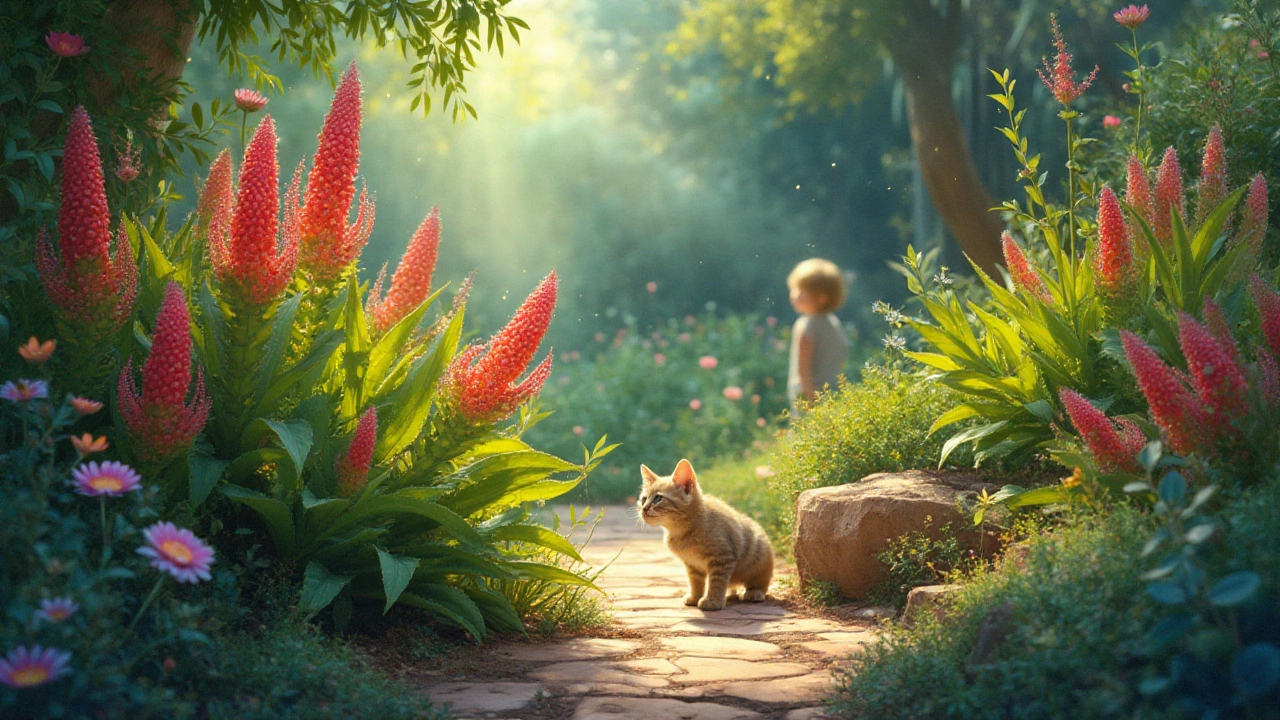The Mother of Thousands, a striking and unique succulent, is both fascinating and controversial due to its potential toxicity. While cherished for its easy cultivation and proliferation, concerns arise for households with children and pets. Understanding this plant's characteristics and precautions is essential for those looking to incorporate it into their garden. Discover its potential risks and explore safe gardening practices. Learn how to enjoy this plant responsibly without compromising safety.
Toxicity in Gardening: What You Need to Know to Keep Plants and Soil Safe
When we talk about toxicity, the presence of harmful substances that damage plants, soil life, or human health. Also known as poisonous buildup, it’s not just about chemicals—it’s about what quietly kills your garden over time. Many gardeners don’t realize their soil is slowly becoming toxic until their plants start dying, their compost smells bad, or their vegetables stop growing. Toxicity isn’t always obvious. It hides in old paint chips, recycled mulch, contaminated water, or even overused fertilizers.
Soil toxicity, a condition where harmful compounds accumulate and disrupt microbial life and root function. Also known as soil poisoning, it’s one of the quietest killers in home gardens. You might be adding compost or perlite to loosen dense soil, but if those materials came from polluted sources, you’re just trading one problem for another. For example, styrofoam used as drainage material doesn’t break down—it leaches microplastics into the soil over years. Drip emitters clog not just from dirt, but from mineral salts left behind by hard water. Even the water you use to water your balcony plants could be carrying traces of chlorine, heavy metals, or pesticides from urban runoff.
Plant toxicity, when a plant itself releases harmful chemicals that affect nearby plants or soil organisms. Also known as allelopathy, it’s why some plants refuse to grow near others—even if they have the same sun and water needs. Hydrangeas might thrive on your balcony, but if you’ve planted them near a surface that retains heat and concentrates toxins from old concrete or treated wood, their roots are suffocating. Rabbits eating zinnias? That’s not just about hunger—it’s about what’s missing in the soil. When soil is toxic, plants become weak and more appealing to pests. And when you try to fix it with chemical sprays, you’re adding more poison to a system already drowning in it.
What’s worse? Most of these toxins build up slowly. You don’t wake up one day to a dead garden. You notice your basil isn’t as fragrant. Your tomatoes take longer to ripen. Your compost smells like rotten eggs instead of earth. These aren’t just "bad luck"—they’re warning signs. The good news? You can reverse most toxicity issues without expensive tools or chemicals. It starts with understanding what’s in your soil, where your water comes from, and what materials you’re bringing into your garden.
Below, you’ll find real fixes from real gardeners who’ve dealt with this exact problem. From how to test your soil without a lab to what to avoid when choosing containers for your balcony, these guides cut through the noise. You’ll learn how to spot hidden toxins, choose safe amendments, and rebuild your garden’s health—step by step, without guesswork.
